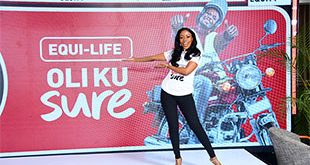
Kampala, Uganda | THE INDEPENDENT | Uganda’s quest for industrialization has been hampered by lack of focus, unclear plans and weak monitoring with most initiatives chaotically implemented, a new study has shown.
The December 2019 study sponsored by German foundation Friedrich Ebert Stiftung on the country’s industrialization journey says that Uganda’s intent to have industries has not been translated into clear plans at the technical and planning level.
This, the report says, leaves the country jumping from one thing to another. The study noted there was clear link between production, value addition and marketing.
The study says each Ministry, Department and Agency (MDA) seems to have its own industrialization agenda, creating confusion and conflict and who should do want.
One of the key informants interviewed, who included top government officials, said: “it is not clear what we want to do and how whom we want to back and whom we should not.”
Industrialization is a where a country develops manufacturing capabilities by establishing industries in various sectors.
Industrialization is expected to be the anchor to achieve Uganda’s vision 2040. It is also expected to take up many of the country’s unemployed youths. The progress has been rather slow; an indicator something was not going on well.
The report also claims it was not clear how Uganda adopted the industrial park model as an anchor for industrialization.
The industrial parks model was a presidential directive, the report said. This was, however, not followed with a study to ascertain the appropriateness of the model. There have been no environmental impact assessment studies to inform location of the industrial parks – except for Namanve. Uganda is now developing 27 industrial parks across the country.
Even then, few parks have become operational. The Auditor General’s Report (2015) said the parks had not performed well in terms of creation.
Ramathan Ggoobi, an economist and lead author of the report, said there were some successes, including the fact that the state is stepping in to play a leading role in pushing for industry growth.
Another thing is the infrastructure development expected to vouch for industrialization and the push for Buy Uganda Build Uganda drive to support local companies.
BUBU has seen Ugandan companies earn contracts worth 890 billion shillings to supply road projects with steel, cement, among other things.
Dr Joseph Muvawala, the Executive Director of National Planning Authority (NPA) said it was high time government agencies were forced to work together and not in solos like they are doing now. This would mean that programmes are thought through before conceived.
******
URN
 The Independent Uganda: You get the Truth we Pay the Price
The Independent Uganda: You get the Truth we Pay the Price




At the just ended Engineers Registration Forum, I presented what some people call a ‘secret’ formula for industrialising agrarian societies – and even gave a mathematical expression for it, solvable only using Artificial Intelligence methods.. It is empirical, based on successful actions of all ‘modern-industrialised’ countries – from the founding nation, Britain to the most recent case of China. In simple terms, it consists of three main groups of actions in a stable political environment: These are: Actions to enhance national consumption; Actions to enhance national production and Actions to create enabling environments for the above 2. Most importantly, individual actions within these three groups MUST be properly sequenced. A summary of the sequencing in each group was given – so that even the uninitiated (read non mathematically gifted) can understand and if possible, implement its results.
Editor allowing – I summarise these results here-under.
Group 1: Sequencing of Enablers: a- Universal basic educ (of 3Rs, Health and Nutrition); b- Vocational and craftsmanship education throughout the population; c- Intracountry transport network devt.; d- Energy infrastructure devt.; e- High level Engineering Educ. devt; f- Highest level Engineering Educ, R&D devt.
Group 2: Sequencing of Production/Manufacturing actions: a- Mobilise peasants to produce for food and cash; b- Form numerous small scale lowest tech rural artisanal firms to pre-process peasant farmer produce
c- Form larger proto industries in rural towns to add value to preprocessed artisanal products, and to service equipment
d- Introduce light manufacturing industries in urban centres toproduce goods principally for the national market, with only a slight attention to exports
e- Introduce heavy manufacturing/heavy chemical industries in cities and main urban centres
f- Start making highest value specialised machinery and integrated systems for special local and selected export markets
Group 3: Actions to massify Consumption: a- Every peasant farmer sells excess produce and earn money, monetising her/his labour b- Rural peasants buy and consume local artisans’ products in attempt to save effort and time on preprocessing and processing activities; c- Urban areas receive rural value-added products as these crisscross the country d- More rural people urbanise and get more sophisticated; export of light industry goods begins e- Machine-making machines get a local market; heavy agricultural, industrial and infrastructural devt machinery get local and export markets f- Specialised government and local highest tech private companies buy the highest end products; guarded and restricted products begin being exported only to selected and restricted markets
The problems in Uganda (and rest of Africa) I now clearly see are: Lack of understanding of necessity to massify consumption (ie prioritise creation of captive domestic markets); a lack of understanding of how to massify production all way from village level (people seem to think that – simply putting up industrial parks will massify production); A real lack of understanding of the manufacturing-consumption inverse pyramids given the technology affordability vis-a-vis its capacity problems. Not least is a total lack of understanding of the importance of sequencing the above actions not only to build organic links between various stages of internal development, but also to provide the absolutely essential RD&C (Research, Development and Commercialisation) learning experiences for local entrepreneurs.